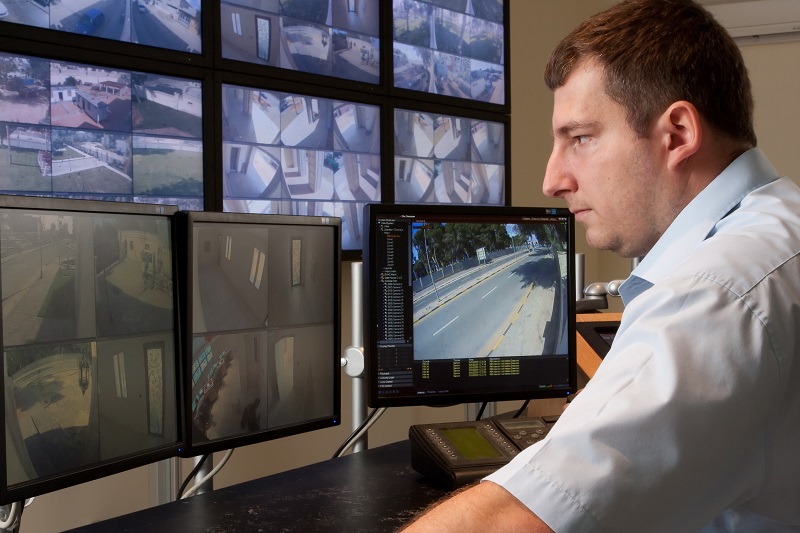Enhance Your Safety And Security With Advanced Fiber Optic Security Solutions
In an era where safety and security is critical, sophisticated fiber optic safety systems offer an engaging option for boosting safety and security throughout different atmospheres. What effects do these innovations hold for future protection actions?
Advantages of Fiber Optic Safety
Taking advantage of the advantages of fiber optic innovation considerably improves safety and security systems across numerous applications. Among the key advantages is the boosted bandwidth capability, enabling the transmission of big amounts of data at high speeds. This is particularly essential for real-time video surveillance, where high-resolution feeds can be sent without latency, ensuring prompt feedback abilities.
Furthermore, fiber optics exhibit superior resistance to electro-magnetic disturbance, which is crucial in atmospheres with potential signal disruptions. This integrity makes certain constant performance in critical protection operations. Furthermore, fiber optic wires are less vulnerable to touching and unauthorized access contrasted to traditional copper wiring, consequently enhancing data integrity and privacy.
An additional noteworthy benefit is the sturdiness of fiber optic systems; they are extra resistant to environmental variables such as moisture, temperature level variations, and corrosive compounds. This strength translates to reduce upkeep prices and longer life expectancies for protection installations.
Finally, the light-weight nature of fiber optic cables assists in less complicated installation and directing, specifically in complex infrastructures (fiber optic security system). Eventually, the assimilation of fiber optic technology into safety systems not just strengthens protection steps however additionally maximizes operational effectiveness
Secret Attributes to Consider
When assessing fiber optic protection systems, numerous key features should be thought about to make sure optimum efficiency and performance. Evaluate the system's detection range and level of sensitivity; a considerable array enables for keeping an eye on big areas, while high sensitivity ensures that also small disturbances are spotted promptly.
Next, take into consideration the assimilation abilities of the system. A fiber optic safety and security system ought to seamlessly interface with existing protection procedures such as cams and alarms, developing a cohesive security network.
Durability and ecological resistance are additionally important functions. Ensure that the system is made to stand up to rough climate conditions and prospective physical dangers, as this will certainly prolong its functional lifespan.

Lastly, check out the scalability of the system. A durable fiber optic safety and security system should be quickly expandable to suit future needs without substantial overhauls. By very carefully considering these attributes, you can click for info choose a fiber optic security option that enhances security and security in your atmosphere.
Installation Process Review
To effectively apply a fiber optic safety system, a systematic setup procedure is vital. This procedure begins with a detailed site evaluation to determine the details safety and security requirements and to recognize ideal areas for fiber optic cable televisions and protection gadgets. Following this analysis, the installation group will certainly develop an in-depth plan, consisting of wire pathways, needed equipment, and conformity with neighborhood policies.
Next, the installment entails laying the fiber optic cable televisions, guaranteeing they are shielded from environmental aspects and physical damages. Proper handling methods are essential, as fiber optic cable televisions are delicate and can be easily harmed. After the cabling is mounted, ports and discontinuations are meticulously completed to make sure signal integrity.
The succeeding stage includes installing safety and security gadgets such as electronic cameras, motion detectors, and alarm, all incorporated with the fiber optic network. Strenuous screening is performed to confirm that all parts are operating appropriately and to make certain ideal performance.

Contrasting Fiber Optic to Conventional Equipments
The advancement of security technology has resulted in significant developments in the comparison between fiber optic systems and traditional copper-based systems. Fiber optic systems utilize light to send information, using premium data transfer and speed compared to their copper equivalents. This causes enhanced data transmission capacities, making optical fiber suitable for high-resolution video surveillance and real-time surveillance.
Furthermore, fiber optic cable televisions are immune to electromagnetic disturbance, lowering the probability of signal degradation triggered by outside factors. This particular guarantees consistent efficiency, even in tough environments. In comparison, standard copper systems are more at risk to interference, leading to prospective vulnerabilities in protection applications.
Toughness is one more benefit of fiber optic systems. They are less vulnerable to damage from ecological elements such as dampness and temperature variations, which can compromise copper circuitry. Additionally, optical fiber are lighter and thinner, next allowing for less complicated installation and minimized physical footprint.
Nevertheless, traditional systems have a tendency to have reduced initial expenses, making them eye-catching for budget-conscious projects. While fiber optic systems might call for a higher in advance financial investment, their long-term advantages-- such as reduced maintenance costs and better reliability-- commonly outweigh the preliminary expenditure, positioning them as an exceptional selection for modern safety and security requirements.
Future Fads in Protection Innovation
Arising fads in security technology are poised to transform the landscape of monitoring and hazard discovery - fiber optic security system. As organizations significantly encounter sophisticated dangers, technologies such as expert system (AI) and equipment knowing (ML) are ending up being important to security systems. These technologies enhance the capacity of fiber optic systems by making it possible for real-time information analysis, identifying anomalies, and automating reactions to prospective violations
Furthermore, the combination of the Web of Things (IoT) is changing protection structures. IoT tools can provide thorough situational recognition and promote smooth interaction in between different safety and security components. This interconnectedness allows for more efficient surveillance and faster case action times.
Biometric authentication is likewise acquiring momentum, providing a greater degree of protection through one-of-a-kind physical attributes. As this innovation progresses, it is most likely to be incorporated into fiber optic systems for enhanced accessibility control.
Final Thought
In final thought, progressed fiber optic security systems represent a substantial development in security and security technology. The shift from typical systems to fiber optic services shows an expanding fad in the direction of more efficient and effective safety review procedures in a significantly complex technological landscape.